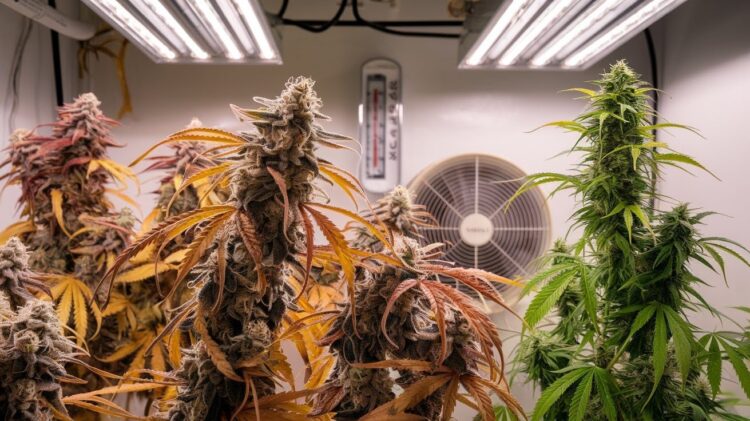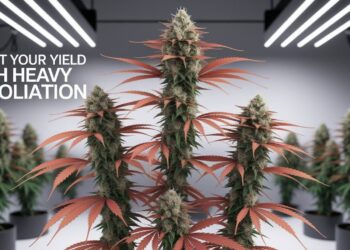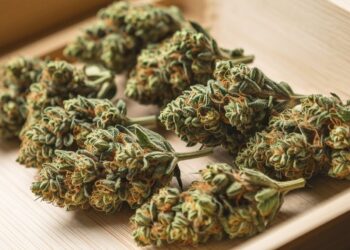Cannabis plants are tough, but high heat can cause serious trouble fast. I’ve grown in some hot conditions over the past ten years, and I’ve learned how quickly heat stress can damage a healthy crop. Leaves curl, tips burn, and buds stop forming like they should.
If you wait too long to act, your yield could take a big hit or, worse, fail. This guide is built on real growing experience and tested solutions. You’ll learn how to spot early signs of heat stress, why it happens, and how to fix the problem before it spreads.
I’ll also share simple ways to keep your grow space cooler and avoid heat-related issues in the future. These tips have saved my plants more than once. By the end, you’ll know how to protect your cannabis from heat and keep your growth moving forward.
Recognizing Heat Stress Signs Across Growth Stages
Heat stress looks different depending on when it hits your plants. Young seedlings react differently from mature plants in the vegetative stage. Here’s what I’ve learned from years of growing cannabis in hot climates.
Seedling Stage Heat Stress Symptoms
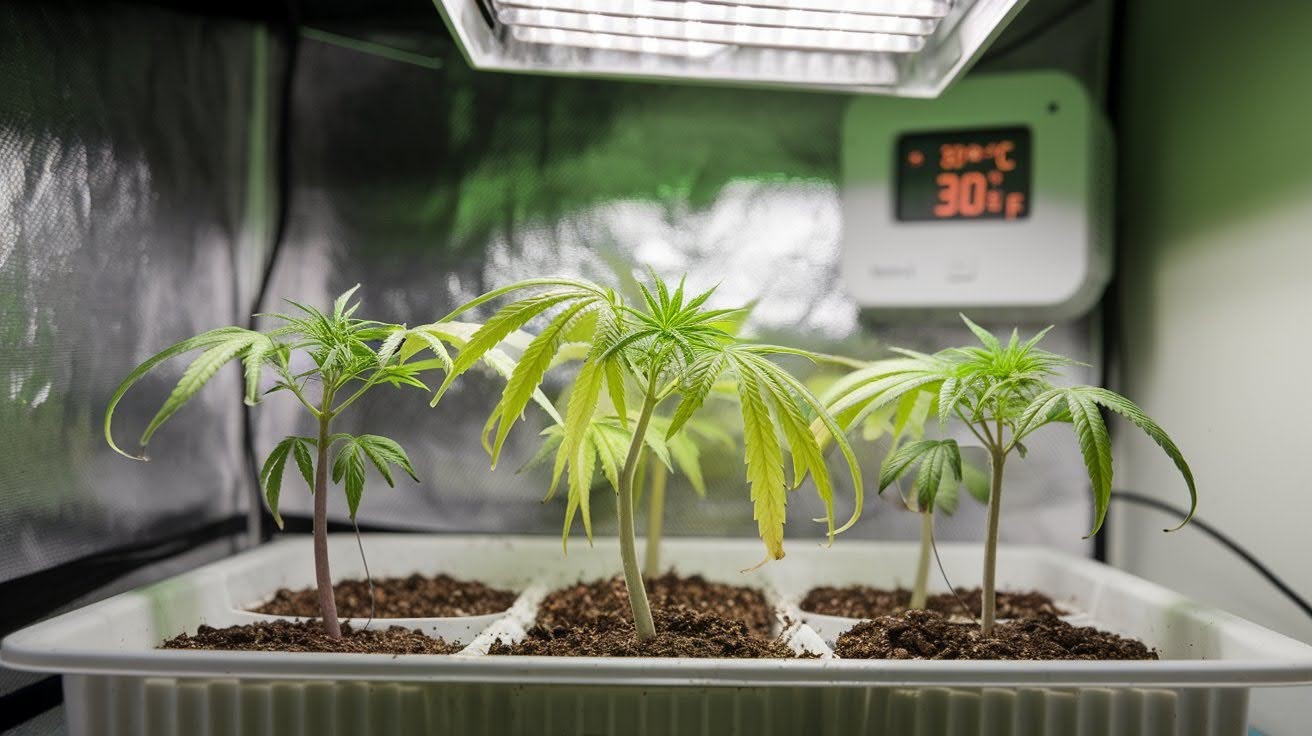
Baby plants are highly vulnerable to heat. They can’t handle what older plants might survive.
Watch for these warning signs:
- Pale and wilted appearance – Your seedlings look weak and droopy, even right after watering. The green color fades to a sickly yellow-white.
- Slow growth patterns – Normal seedlings should show new growth every few days. Heat-stressed babies barely grow at all.
- Increased fragility – These little plants become super sensitive to any change. Moving them or adjusting lights causes immediate stress.
Vegetative Stage Warning Signs
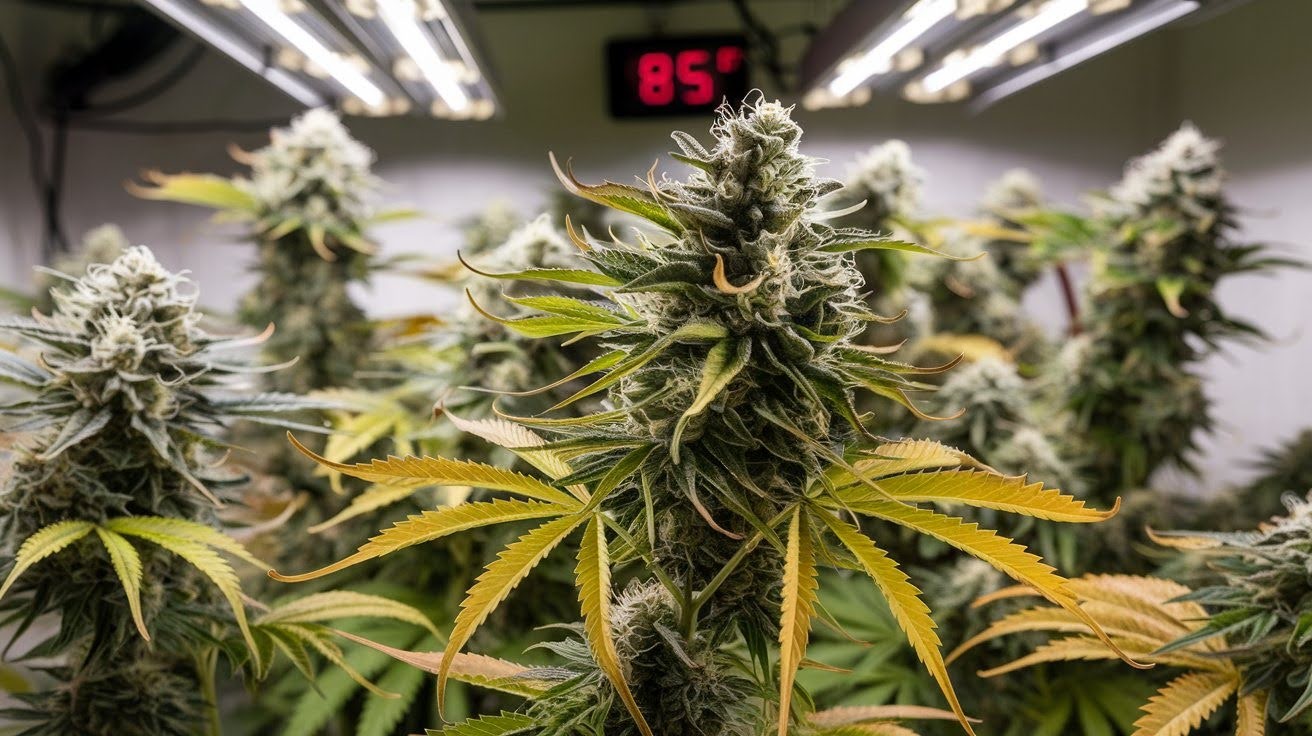
Older plants show more obvious symptoms. These are the big ones: Leaf curling happens first. Leaves fold upward like tacos or ice cream cones. This is your plant’s way of reducing surface area exposed to heat.
Leaf discoloration comes next. You’ll see yellow-brown spots appear on leaf tips. These burn marks spread inward if the heat continues. Dry, crispy foliage develops even when you’re watering properly.
Leaves feel brittle and crumble when touched. Stunted growth becomes evident after a few days. New shoots stop forming. Existing branches don’t get longer.
Important distinction: Heat stress looks similar to calcium deficiency, but there’s one key difference. Calcium problems show brown spots in the middle of leaves. Heat stress burns the edges and tips first. Feel the leaves too.
Heat damage makes them dry and crispy. Calcium deficiency keeps leaves soft, even with brown spots. Quick test: If your room temperature is above 85°F and you see these symptoms, it’s probably heat stress, not nutrients.
Flowering Stage Heat Stress Indicators
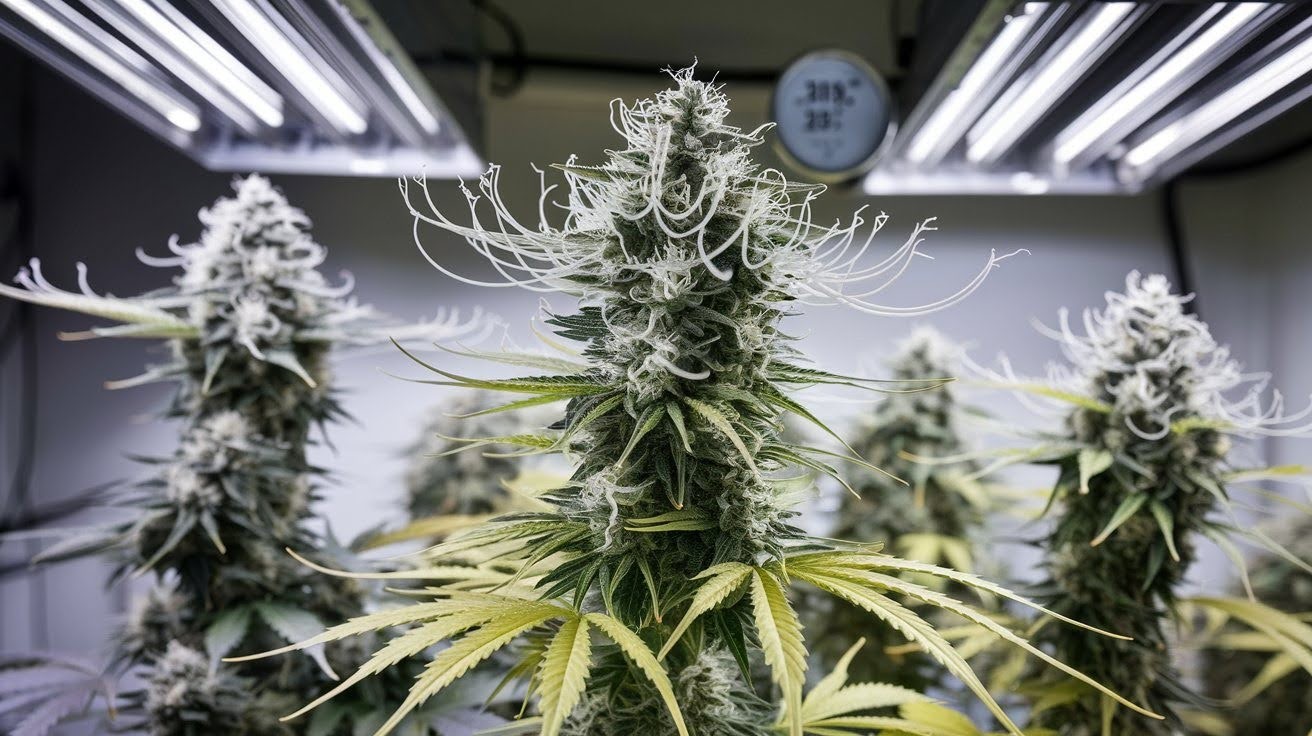
Flowering plants show different heat stress signs than younger plants. The symptoms affect your buds directly. Here’s what I watch for during the flower:
Foxtailing is the most enormous red flag. New buds start growing on top of your existing buds, creating spire-like towers. This looks weird and reduces your final yield.
Excessive white pistil production happens when plants get too hot. You’ll see way more white hairs than usual, but they don’t develop into solid buds. Airy, less dense bud structure develops over time.
Your buds feel light and fluffy instead of tight and heavy. This directly impacts your harvest quality. Bleached or yellowed upper canopy leaves appear near your lights.
The top leaves turn white or pale yellow, while the lower leaves stay green. Bottom line: Heat stress during flowering ruins your harvest.
Quick Identification Techniques
Time is critical when dealing with heat stress. You need fast, reliable ways to spot problems before they get worse.
Visual Inspection Methods
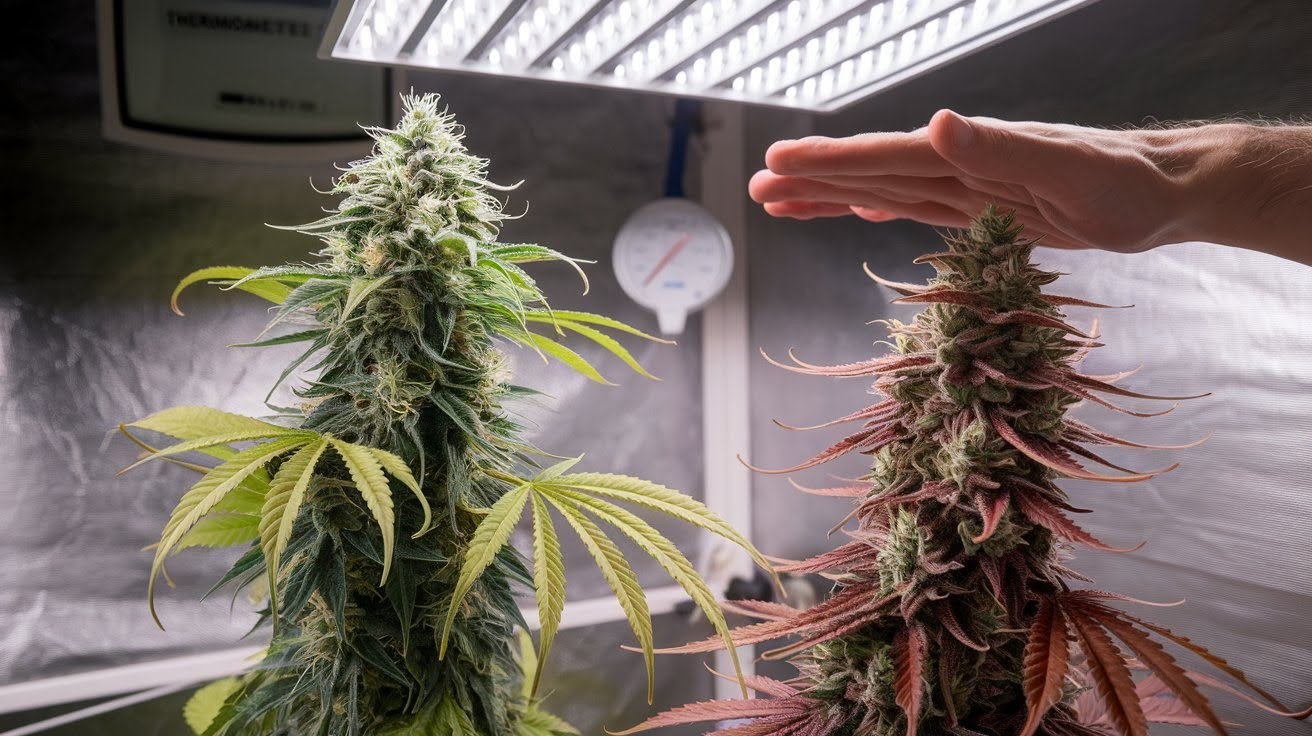
I use these simple tests to check my plants daily. Hand test – Hold your hand at the same height as your top buds for 30 seconds. If it feels uncomfortably hot to you, it’s too hot for your plants. Leaf positioning – Healthy leaves sit flat or angle slightly downward.
Heat-stressed leaves curl upward like they’re trying to escape the heat. Color patterns help you tell heat damage from other problems. Heat damage starts at leaf edges and tips. Nutrient problems usually show up in the middle of leaves first.
Growth patterns change when plants get too hot. Normal growth happens evenly across the plant. Heat stress causes weird, spiky growth at the top while the bottom branches stay normal.
Environmental Monitoring
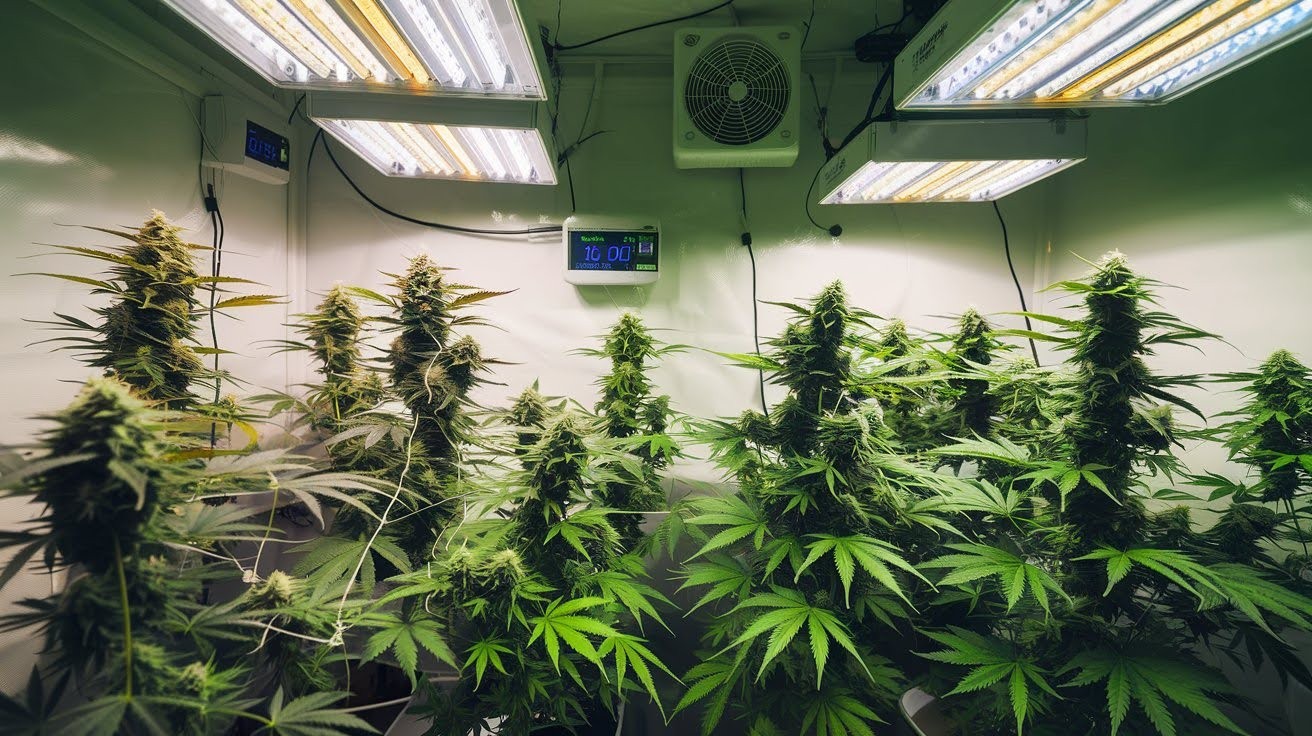
Don’t guess about the temperature. Get real numbers. Digital hygrometers give you exact readings. Place them at different heights in your grow space. I keep one at soil level and one at canopy height.
Hot spots are common in grow rooms. Check corners, areas near lights, and places with poor air circulation. These spots can be 10-15 degrees hotter than the rest of your room. Monitor plant response when you make changes.
Lower the temperature by 5 degrees and watch how your plants react over the next day. Quick tip: Plants recover from mild heat stress within 24-48 hours if you fix the problem fast.
Fast Indoor Heat Stress Fixes
Your plants are overheating right now. Here’s how to cool them down quickly.
Immediate Lighting Adjustments
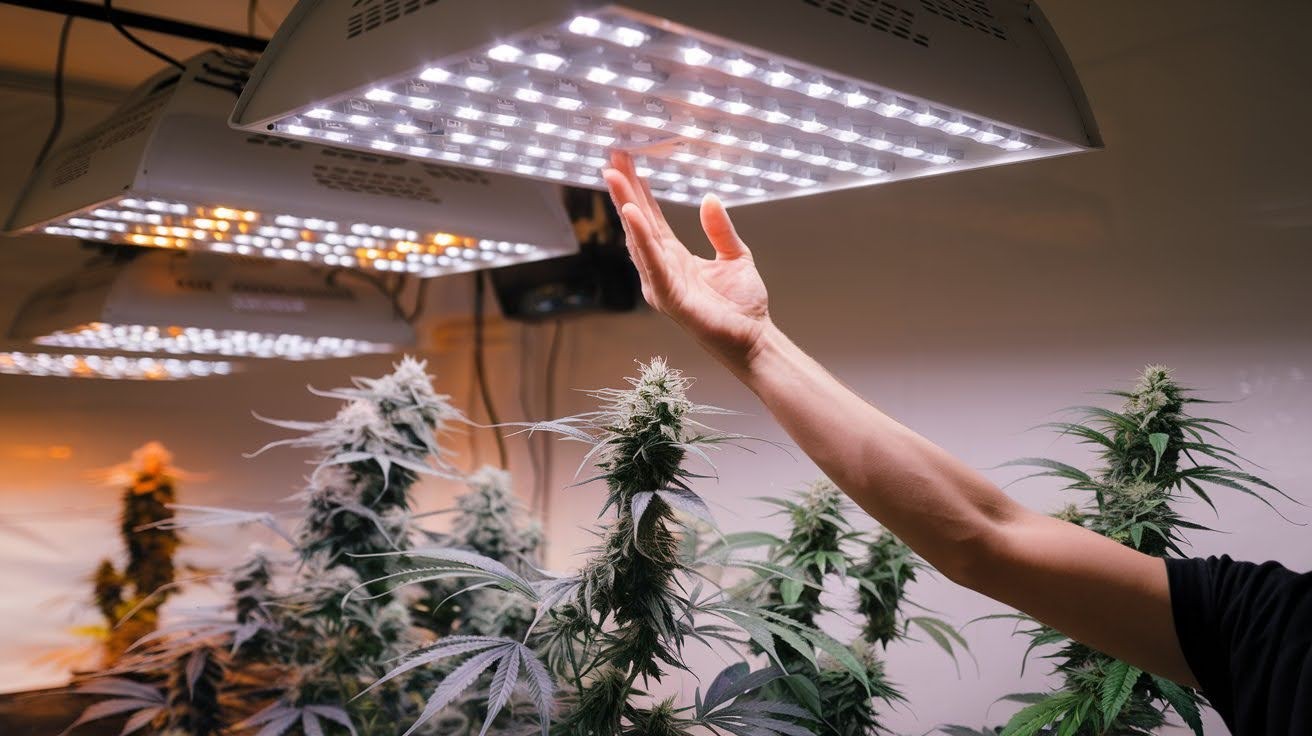
Move your lights up first. This gives instant relief. Distance optimization – Raise your lights 6-12 inches higher immediately. I know you’re worried about losing light intensity, but dead plants get zero light.
LED upgrades work long-term. LEDs produce 40% less heat than HID lights. If you’re running old metal halide or HPS bulbs, start planning your switch. PPFD considerations matter here.
Without extra CO2, your plants can’t handle intense light anyway. Lower light levels often mean healthier plants and better yields. Quick test: If you can’t hold your hand under the light for 30 seconds, it’s too close.
Quick Ventilation Solutions
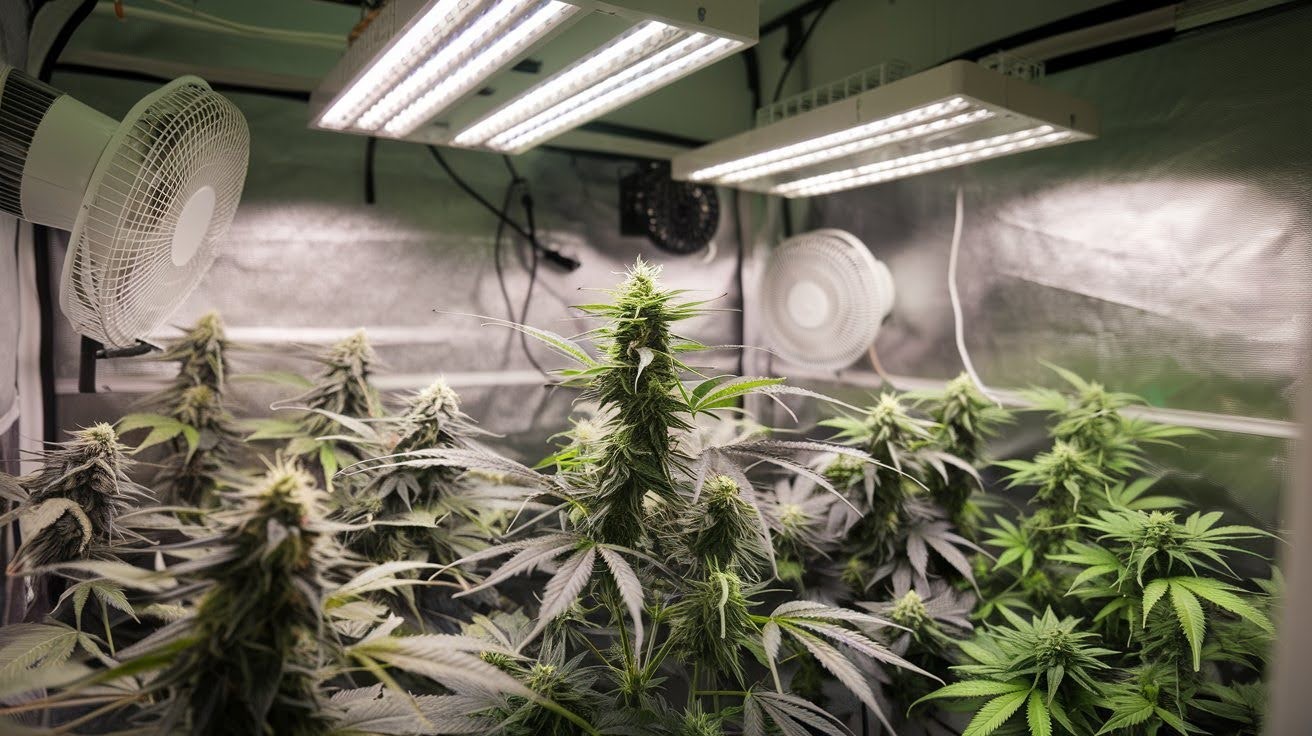
Air movement solves most heat problems fast. Fan placement – Put fans at different heights, one blowing across the canopy, one at soil level. Cross-ventilation works better than fans all pointing in the same direction.
Oscillating fans prevent hot spots from forming. I use two 6-inch oscillating fans in my 4×4 tent. They create gentle breezes that keep the air moving constantly. Exhaust systems are crucial.
Your exhaust fan should exchange all the air in your grow room every 5 minutes. Here’s the math: Room volume ÷ 5 = minimum CFM needed. Emergency fix: Open your tent or room door temporarily while you install better ventilation.
Pro tip: Run your lights during cooler hours. I run mine from 6 PM to 6 AM during summer. Night temperatures are always cooler than day temperatures. Bottom line: Air circulation fixes heat stress faster than any other single change.
Rapid Cooling Methods
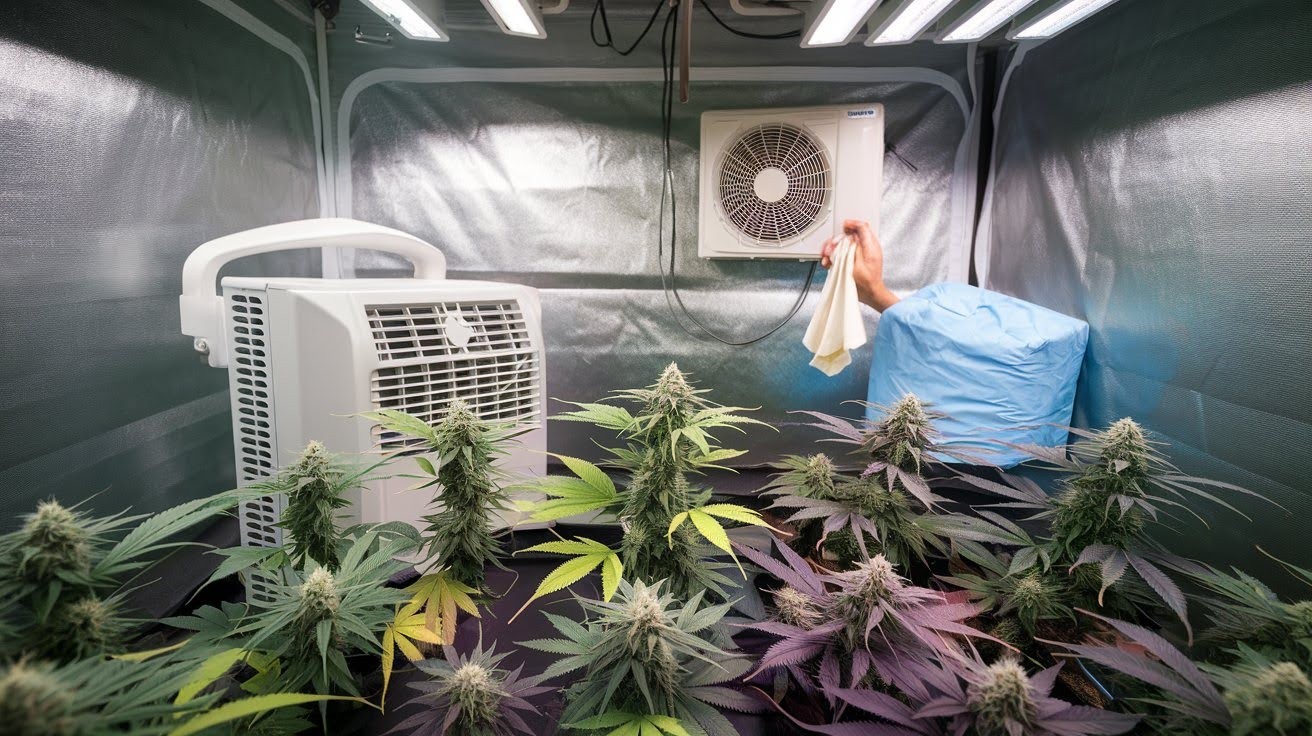
Sometimes, fans aren’t enough. You need serious cooling power. Air conditioning gives immediate relief when temperatures spike above 85°F. I use a portable AC unit in my grow room during summer heat waves.
Size matters – Calculate your room’s BTU needs. A 4×4 tent needs about 5,000 BTUs. Bigger rooms need more cooling power. Placement tip: Position the AC unit so cold air hits your exhaust fan.
This creates better air circulation throughout your space. Creating negative pressure helps hot air escape faster. Your exhaust fan should be stronger than your intake fan. Simple setup: Use a 6-inch exhaust fan with a 4-inch intake fan.
This pulls hot air out while bringing cooler air in. Test it: Hold a piece of tissue paper near your tent opening. It should get sucked toward the exhaust, not blown away. Emergency option: Ice packs near your intake fan provide temporary cooling.
Fast Outdoor Heat Stress Fixes
Outdoor heat hits differently than indoor problems. You can’t control the sun, but you can protect your plants.
Immediate Watering Strategies
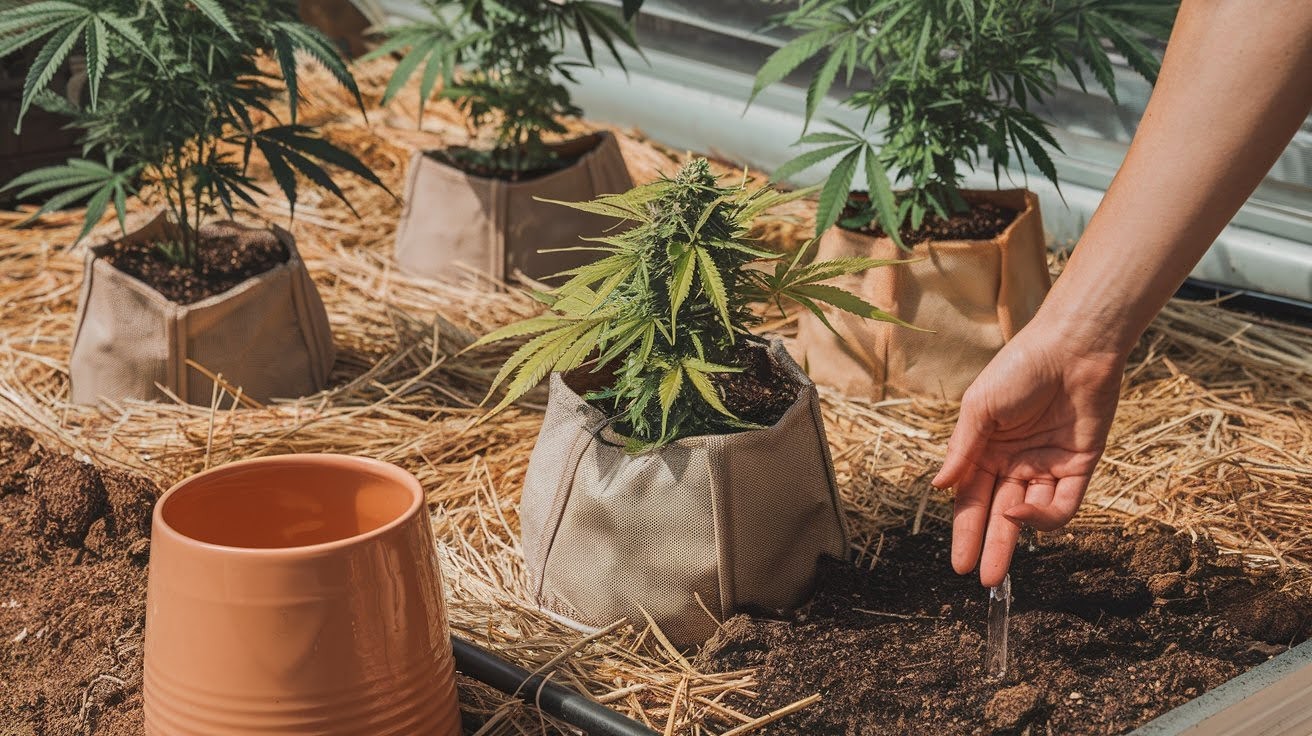
Water timing makes a huge difference in hot weather. Emergency timing – Water at 6 AM and again at 7 PM. Never water during midday heat. Water droplets act like tiny magnifying glasses and burn your leaves.
Root cooling techniques keep your plants comfortable longer. Ceramic pots stay cooler than plastic ones. I bury my fabric pots halfway in the ground during heat waves. Ground placement helps, too.
Dig shallow holes and place your containers inside. The Earth stays cooler than the air temperature. Soil moisture management – Stick your finger 2 inches deep. If it’s dry, water immediately.
Dry soil heats up faster and stresses roots. Quick fix: Mulch around your plants with straw or wood chips. This keeps soil temperatures down by 10-15 degrees.
Quick Shade Solutions
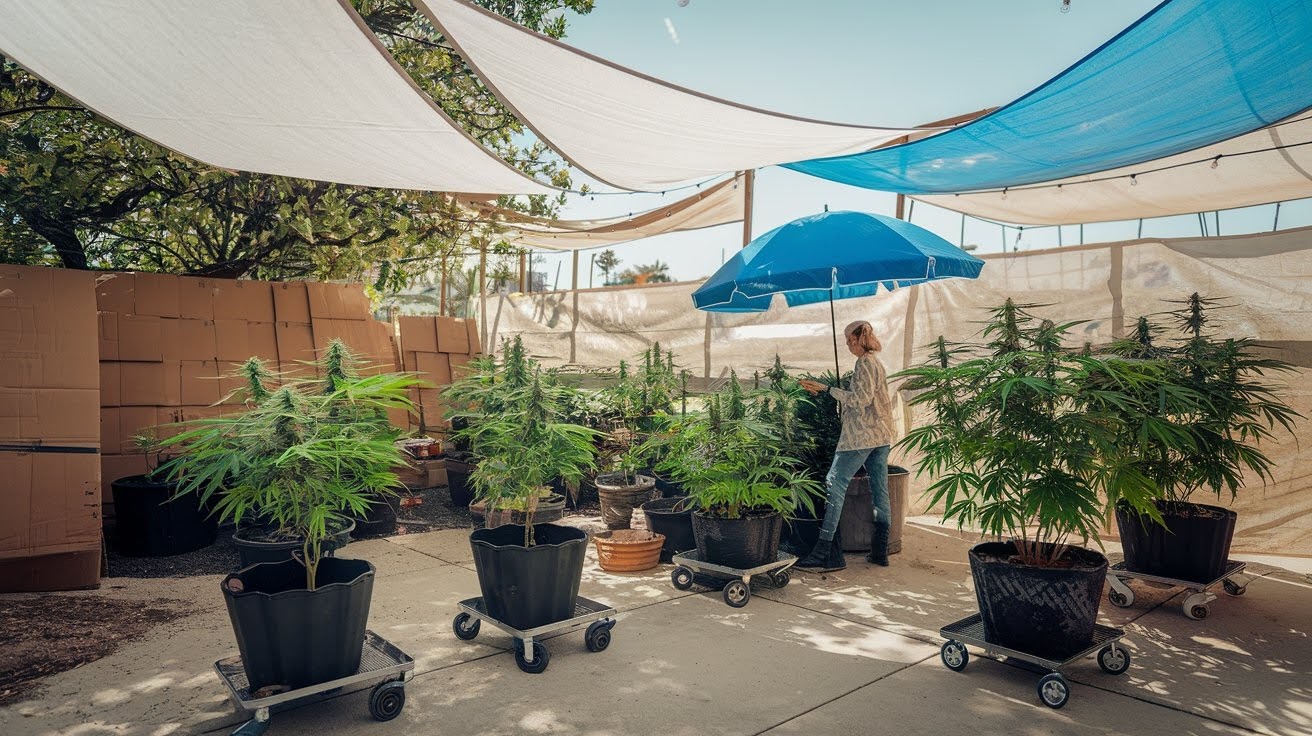
Shade is your best friend during extreme heat. Temporary sheltering works in emergencies. I use old bed sheets or shade sails from the hardware store. 30-50% shade cloth works perfectly for cannabis.
Setup tip: Create shade that blocks the harshest sun from 11 AM to 3 PM. Your plants can handle morning and evening sun just fine. Portable growing gives you flexibility. Container plants can move to shadier spots during heat waves.
I roll my heavy pots on furniture dollies. Immediate protection – Use beach umbrellas, patio umbrellas, or even cardboard as emergency shade. Anything is better than direct sun when temperatures hit 95°F+.
Pro move: Plant your outdoor cannabis where it gets morning sun but afternoon shade. East-facing spots work great. Remember: A little shade is better than dead plants.
Fast Recovery and Treatment Methods
Your plants are damaged but not dead. Here’s how to help them bounce back quickly.
Immediate Response Actions
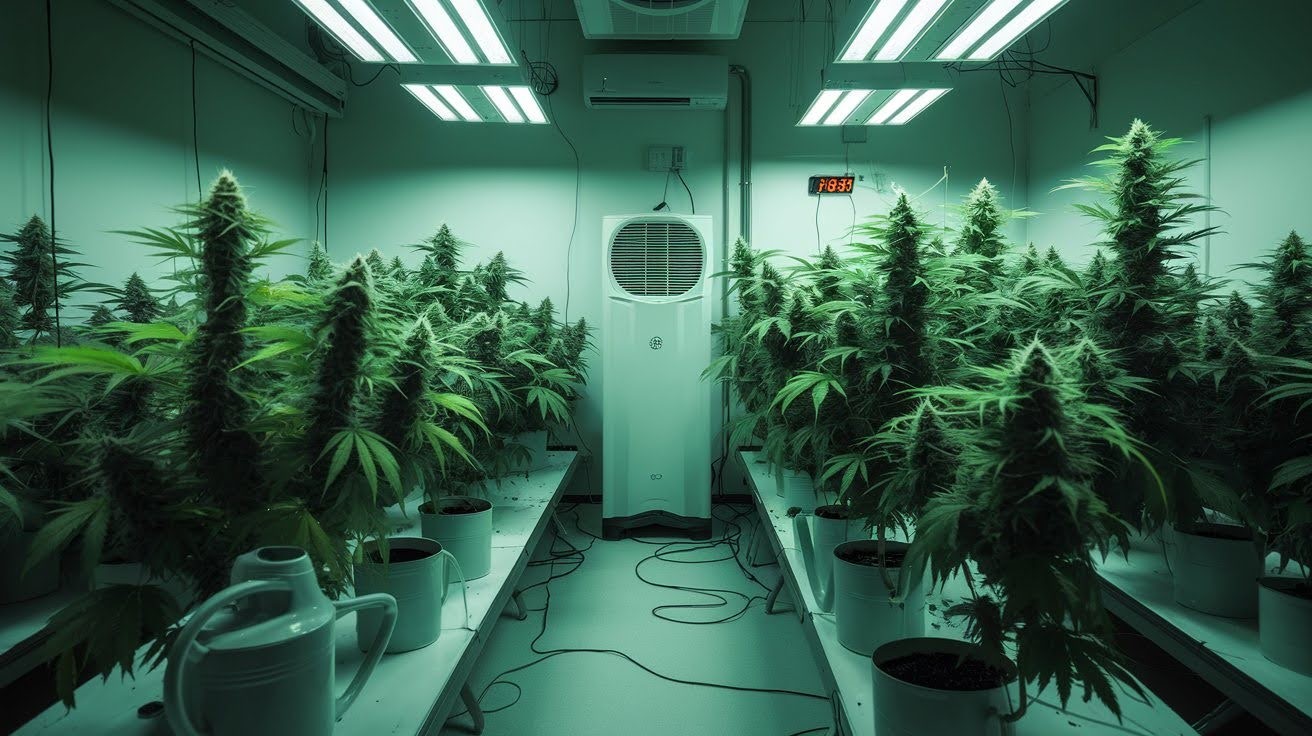
Cool things down first. Everything else comes after temperature control. Temperature reduction – Drop your room temperature by 5-10 degrees immediately. I aim for 75-80°F during recovery. Lower is better than higher right now.
Stress minimization means no training, no pruning, no transplanting. Leave your plants alone except for watering. Any additional stress can kill heat-damaged plants. 24-48 hour assessment – Look for new leaf curling or spreading damage.
If damage stops spreading, your fixes are working. If it keeps getting worse, you need more aggressive cooling.
Quick Nutritional Support

Feed your plants the proper nutrients to speed recovery. Seaweed kelp extract helps plants handle heat stress. Mix one tablespoon per gallon of water. Spray leaves early morning or late evening only.
Silicon supplementation strengthens cell walls against heat damage. Use liquid silicon at half strength during recovery. Strong cell walls mean less heat damage. Feeding adjustments – Cut nitrogen by half during heat stress.
Too much nitrogen makes heat damage worse. Focus on potassium and phosphorus instead.
Recovery Success Indicators
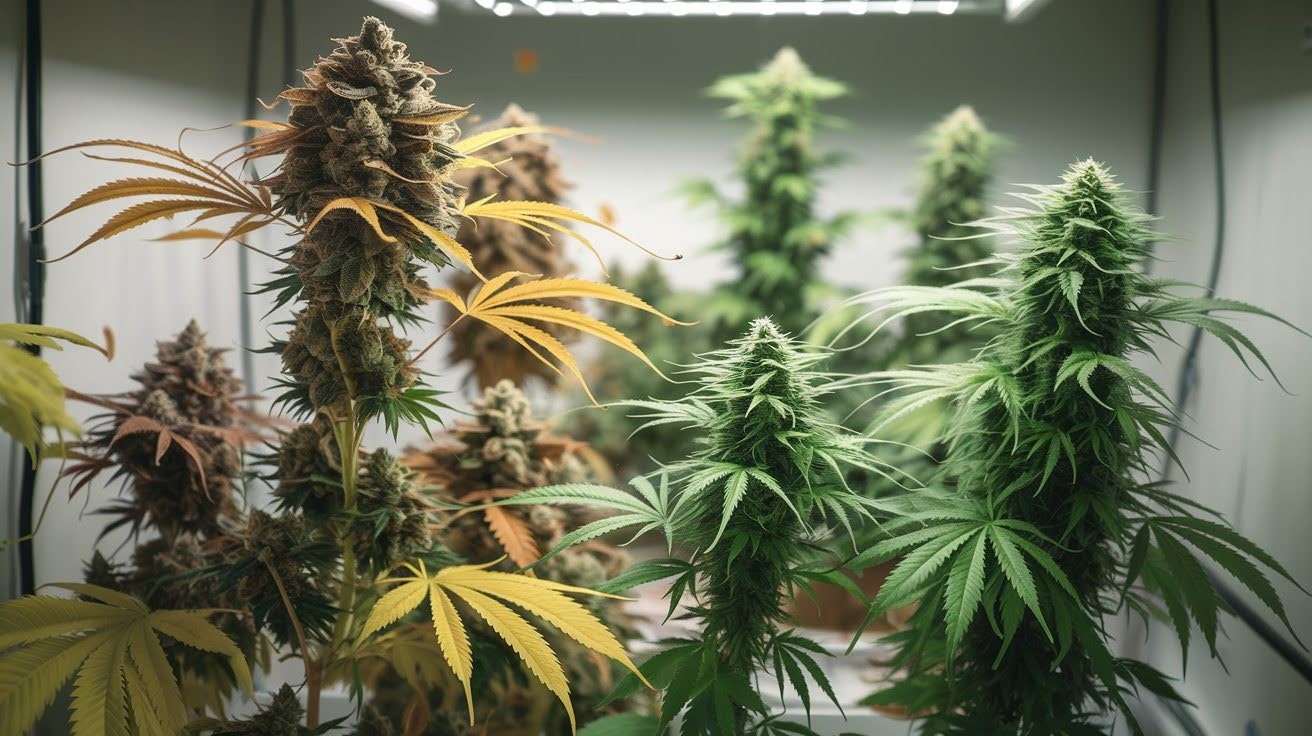
Watch for these good signs over the next week. Leaf management – Remove completely brown or crispy leaves immediately. Leave yellowing leaves that still have some green. They might recover.
Growth pattern tracking – New shoots should appear within 3-5 days if recovery is working. Look for small green tips at branch ends. New growth monitoring – Fresh leaves should come in a standard green color without curling.
This tells you the heat stress is gone. Recovery timeline: Most plants show improvement in 24-48 hours and complete recovery in 1-2 weeks.
Conclusion
Heat stress weed problems don’t have to ruin your harvest. Now you know exactly what to look for at every growth stage and how to fix it fast. Remember the key signs: leaf curling, brown tips, and stunted growth. Act quickly when you spot them.
Move lights up, improve air circulation, and provide shade for outdoor plants. Most cannabis plants recover from heat stress within 24-48 hours when you address the problem early. Your plants are tougher than you think. Keep this guide handy during hot weather.
Check your plants daily during summer months, and don’t panic if you see early warning signs.
Got questions about your specific heat stress situation? Drop a comment below. I’d love to help you save your plants and get back to growing healthy cannabis.
Frequently Asked Questions
What are the first signs of heat stress and weed damage?
Upward leaf curling, brown leaf tips, and wilting despite proper watering. Leaves may also develop yellow-brown spots starting at the edges.
How hot is too hot for cannabis plants?
Temperatures above 85°F (29°C) cause heat stress. Optimal growing temperature is 70-80°F (21-27°C). Temperatures above 90°F can cause severe damage quickly.
Can heat-stressed weed plants recover completely?
Yes, most plants recover within 24-48 hours if you fix the temperature problem quickly. Remove damaged leaves and provide proper cooling.
How do I cool down my cannabis plants fast?
Raise lights higher, add fans for air circulation, water early morning/evening, and provide shade. Air conditioning helps in severe cases.
Does heat stress affect cannabis potency and yield?
Yes, heat stress reduces both potency and yield. It causes airy buds, foxtailing, and stunted growth, significantly impacting final harvest quality.

